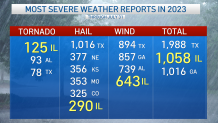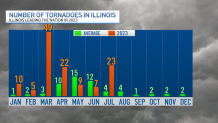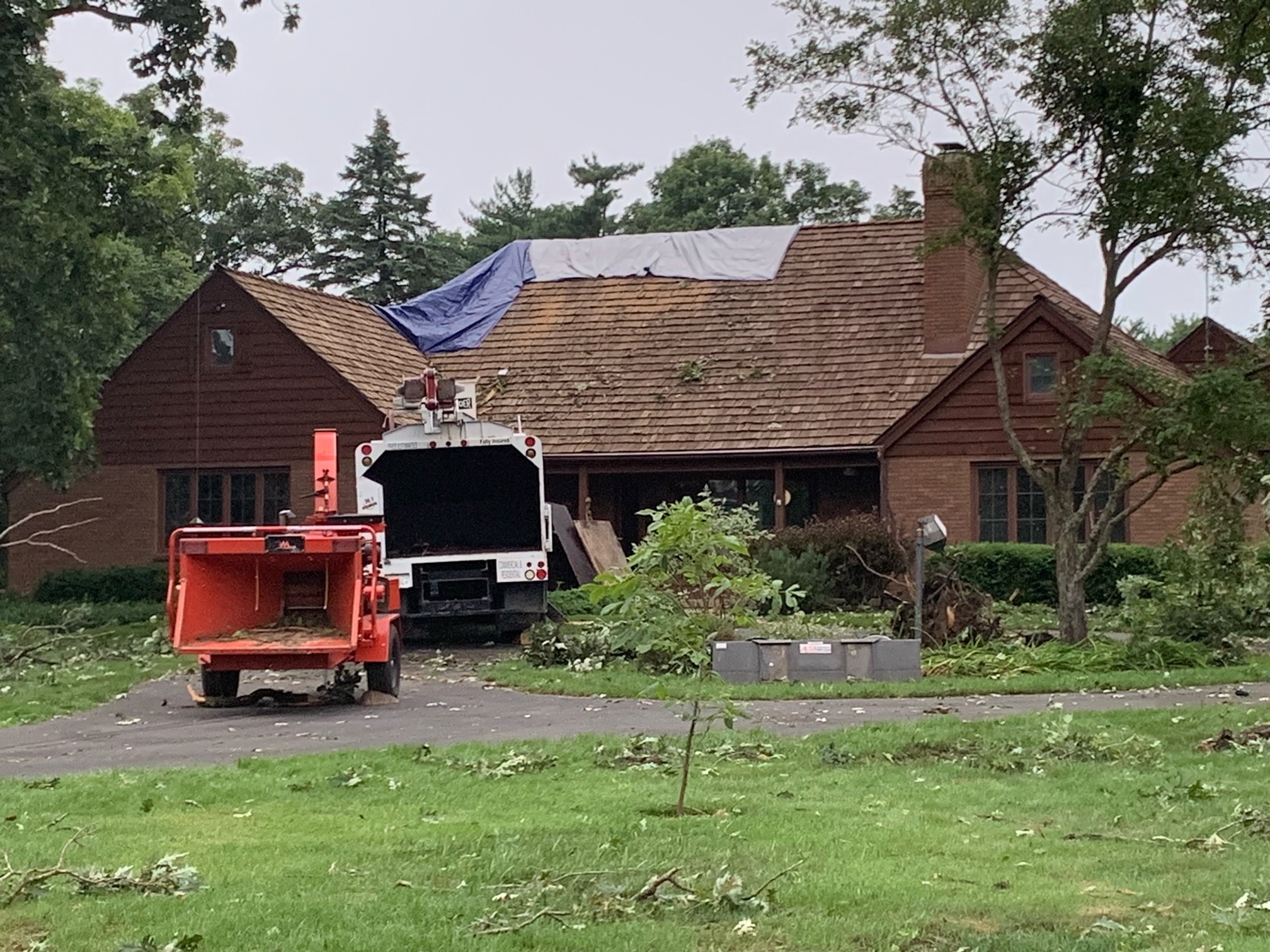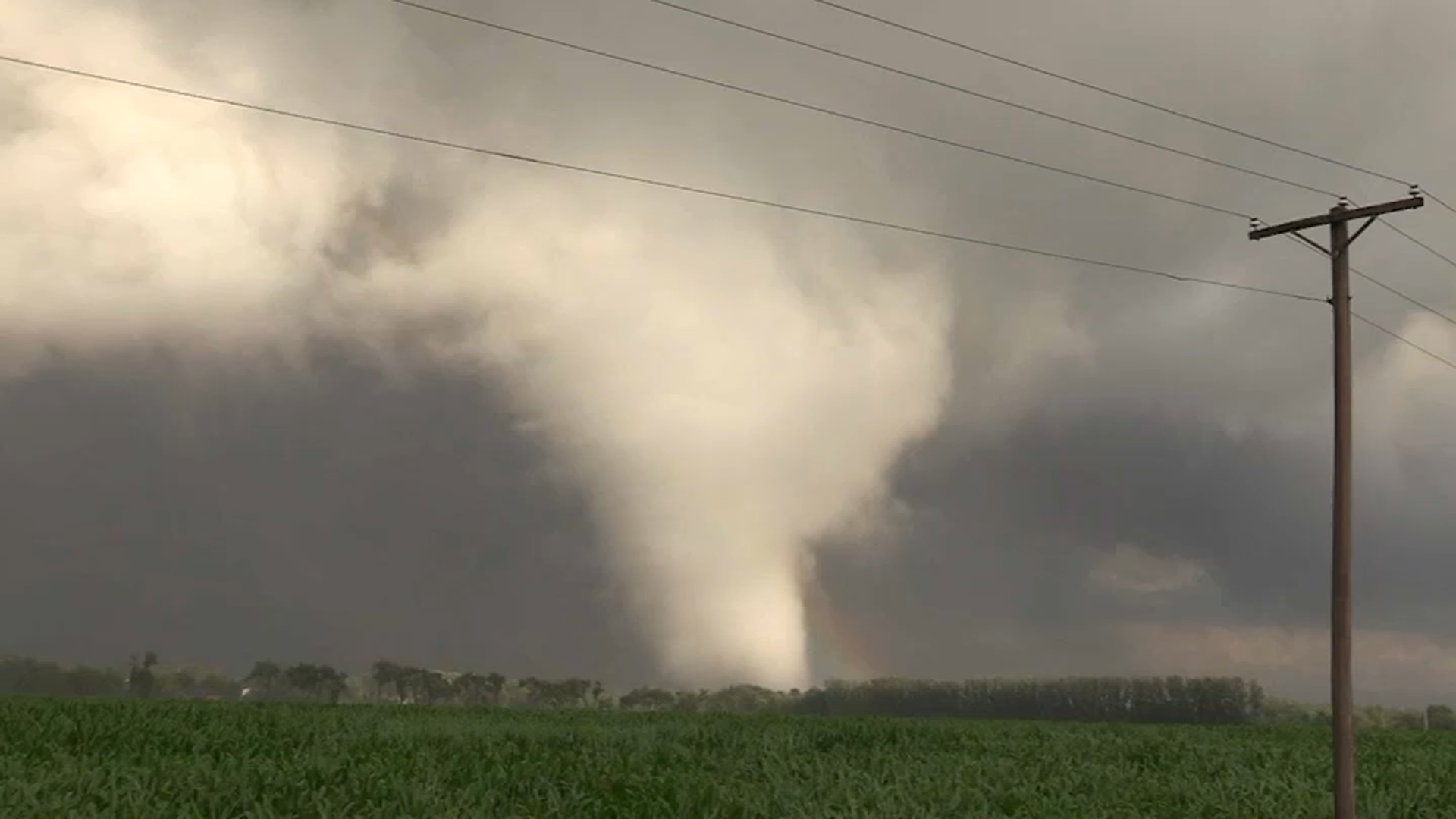Illinois leads the nation in tornadoes for 2023 and is currently ranked second for all severe weather reports, according to data.
Through July 31, Illinois has had 125 tornadoes so far this year, according to reports from the National Oceanic and Atmospheric Administration's Storm Prediction Center. The state typically averages around 47 tornadoes through July and 54 tornadoes in a year. The record for Illinois is 144 from 2006.

Severe storms fired up quickly this year with 10 tornadoes reported in Illinois on Jan. 3 alone. Then, at the end of March the nation had its third-largest tornado outbreak in history. Northern Illinois and northwest Indiana had the highest number of tornadoes in a 24-hour period that day with 22 on March 31, according to the National Weather Service.
Most of the tornadoes this year in Illinois have been in the central part of the state, but records are also being surpassed in northern Illinois.
The NWS Chicago office, which includes northern Illinois and northwest Indiana, has had 50 tornadoes in its forecast area this year, beating the record of 35 tornadoes in 2015.

It may be more active in 2023 than in 2015, but the storm patterns were more intense in 2015. In that year, the area saw stronger individual super cell storm events, including an EF-4 in Rochelle and Fairdale that killed two and injured 22.
The tornadoes in 2023 have mostly come from quasi-linear-convective systems (QLCS), or lines of storms that often bow out. Smaller rotating columns are common in QLCS’s, but tend to be weaker than in traditional supercell thunderstorms. For that reason, the tornadoes so far this year have been mostly EF-0s, though there were some EF-1s and a few EF-2s.
The average number of tornadoes does appear to be increasing over the years. However it’s important to note that the ability to confirm and detect tornadoes has also increased with better data and technology. Dual-pol radars were implemented a little over 10 years ago and have been critical in helping detect debris signatures using correlation coefficient data. It’s possible smaller tornadoes have gone undetected and undocumented in the past.
Feeling out of the loop? We'll catch you up on the Chicago news you need to know. Sign up for the weekly> Chicago Catch-Up newsletter.
Thankfully, the Chicago area is through the typical peak of severe weather season, but tornadoes are possible any month of the year in Illinois so make sure you’re staying prepared.



